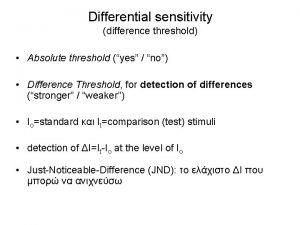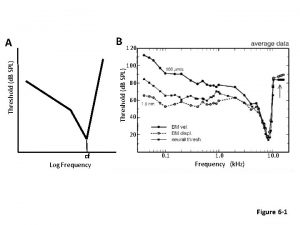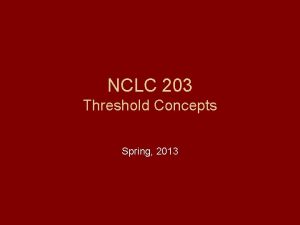MD 2490 Measurement of the TMCI Threshold at













- Slides: 13

MD 2490: Measurement of the TMCI Threshold at Flat-Top D. Amorim, S. Antipov, N. Biancacci, X. Buffat, L. Carver, E. Métral, A. Mereghetti, B. Salvant, D. Valuch With inputs from R. Bruce, R. Tomas Garcia 2017 -07 -11 LSWG, presentation of MD 2490 1

Tune shift vs. intensity High priority • Check the LHC impedance model for different collimator settings – Reaching the TMCI might be difficult, and the actual intensity threshold might be lower than simulated – The TMCI threshold can be extrapolated from a tune shift vs. intensity measurement – Measurement with both beams to investigate discrepancies between B 1 and B 2 Single bunch intensity / 1011 ppb – Measurement repeated for different collimator settings to get more data Test on 20/05/2017 (with Q’=15) – Would allow to better understand instabilities observed in B 1 H 2017 -07 -11 LSWG, presentation of MD 2490 2

Tune shift vs. intensity High priority Check the LHC impedance model for different collimator settings – Reaching the TMCI might be difficult, and the actual intensity threshold might be lower than simulated – The TMCI threshold can be extrapolated from a tune shift vs. intensity measurement – Measurement with both beams to investigate discrepancies between B 1 and B 2 – Measurement repeated for different collimator settings to get more data – Would allow to better understand instabilities observed in B 1 H • Single bunch intensity / 1011 ppb Possible intensity points 2017 -07 -11 LSWG, presentation of MD 2490 3

MD 2479: Transverse Beam Stability in the HL-LHC era D. Amorim, S. Antipov, N. Biancacci, X. Buffat, L. Carver, E. Métral, A. Mereghetti, B. Salvant, D. Valuch With inputs from R. Bruce, R. Tomas Garcia 2017 -07 -11 LSWG, presentation of MD 2479 4

Stability margin at flat-top • Reproduce the HL-LHC impedance and check the stability margins – HL-LHC impedance budget is lower than the LHC, but beam brightness is higher – Reproduce the HL-LHC impedance budget assuming Molybdenum collimators by retracting the gaps of some collimators (to be defined later) – Use a HL-LHC nominal bunch to assess the octupole current needed to stabilize the beam • Measurement plan (8 h) – 2 bunches per beam of different intensities (ex: 0. 5· 1011 and 2. 3· 1011), stay below 3· 1011 total intensity – Ramp with relaxed collimators settings and increased octupoles to keep the high intensity bunch stable – Measure emittance and chromaticity – Decrease the octupole current until the beam gets unstable – Perform the measurement on both beam and planes – Repeat the measurement in two other ramps with different chromaticity settings (ex: Q’=10 and Q’=5) 2017 -07 -11 LSWG, presentation of MD 2479 5

Backup 2017 -07 -11 MD 2490: Measurement of the TMCI Threshold at Flat-Top 6

Observation of TMCI • At low chromaticities, Transverse Mode Coupling Instability could become an intensity limitation – Measurement of the TMCI threshold was recommended by CMAC 11 – TMCI could be a limitation in the FCC-hh – At low chromaticities, mode coupling might be involved in two effects: • • With the damper on, an instability could arise for bunch intensities lower than the TMCI threshold The stability diagram theory predicting the octupole current thresholds doesn’t include mode coupling: higher octupole current might be needed for stabilization – Tune shift measurements for nominal collimators setup in 2017 place the TMCI threshold between Simulated TMCI threshold 2017 -07 -11 MD 2490: Measurement of the TMCI Threshold at Flat-Top 7

Destabilizing effect of the transverse damper Nominal collimator settings, 100 turns damper Intensity region where mode coupling could induce an instability 2017 -07 -11 MD 2490: Measurement of the TMCI Threshold at Flat-Top 8

Destabilizing effect of the transverse damper Intensity region where mode coupling could induce an instability 2017 -07 -11 MD 2490: Measurement of the TMCI Threshold at Flat-Top 9

Destabilizing effect of the transverse damper Intensity region where mode coupling could induce an instability 2017 -07 -11 MD 2490: Measurement of the TMCI Threshold at Flat-Top 10

Destabilizing effect of the transverse damper Intensity region where mode coupling could induce an instability 2017 -07 -11 MD 2490: Measurement of the TMCI Threshold at Flat-Top 11

Lower TMCI threshold with tighter collimator settings Tighter collimator settings in IR 7, no damper Intensity threshold for TMCI 2017 -07 -11 MD 2490: Measurement of the TMCI Threshold at Flat-Top 12

Lower TMCI threshold with tighter collimator settings Tighter collimator settings in IR 7, no damper Simulated Head-Tail monitor signal Intensity threshold for TMCI 2017 -07 -11 MD 2490: Measurement of the TMCI Threshold at Flat-Top 13
 Toyota motor europe technical centre
Toyota motor europe technical centre Thế nào là mạng điện lắp đặt kiểu nổi
Thế nào là mạng điện lắp đặt kiểu nổi Cách giải mật thư tọa độ
Cách giải mật thư tọa độ Lời thề hippocrates
Lời thề hippocrates Chụp phim tư thế worms-breton
Chụp phim tư thế worms-breton Vẽ hình chiếu đứng bằng cạnh của vật thể
Vẽ hình chiếu đứng bằng cạnh của vật thể Quá trình desamine hóa có thể tạo ra
Quá trình desamine hóa có thể tạo ra Khi nào hổ mẹ dạy hổ con săn mồi
Khi nào hổ mẹ dạy hổ con săn mồi điện thế nghỉ
điện thế nghỉ Các châu lục và đại dương trên thế giới
Các châu lục và đại dương trên thế giới Dạng đột biến một nhiễm là
Dạng đột biến một nhiễm là Thế nào là sự mỏi cơ
Thế nào là sự mỏi cơ Bổ thể
Bổ thể Phản ứng thế ankan
Phản ứng thế ankan

























